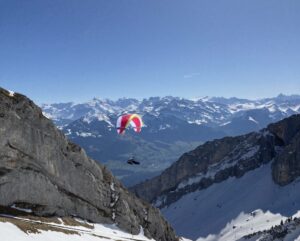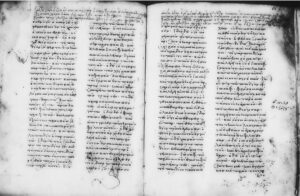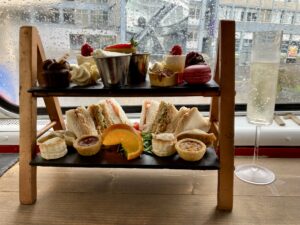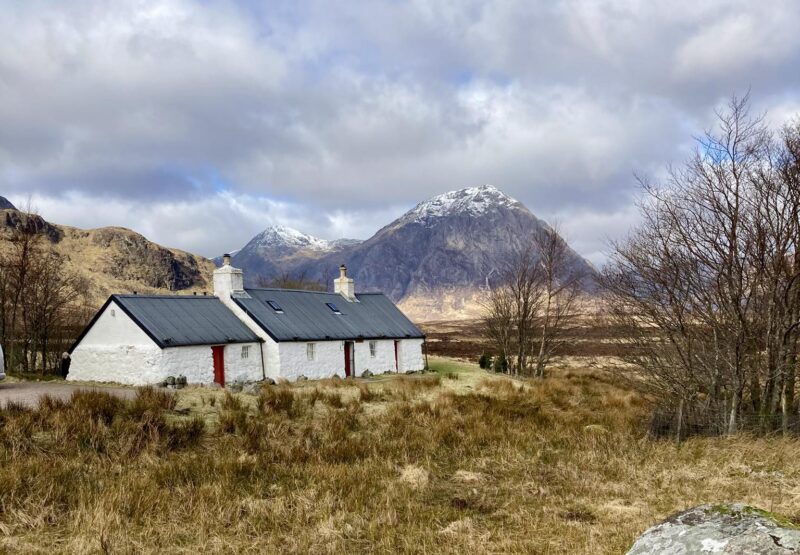My Regensburg Year Part 8: March 2025
This month was bookended by two concerts, one in Munich and the other in Glasgow. I don’t normally mention music here but I am not only a scholar and a traveller, I am also a struggling musician—that is, I struggle to play competently.
The first concert was by Michael Kiwanuka, a British singer-songwriter of Ugandan heritage. Like many British acts, Kiwanuka rarely plays in Canada, so this was our best opportunity to see him live. And he did not disappoint. The concert took place at the Zenith, a converted railway repair shop built in 1918. Going in, I did not have high hopes for the acoustics of the hall but I was surprised to hear that his nine-piece band (with three backup singers and a string duo) sounded crisp and clear.

The concert led into a weekend trip to Switzerland. We stayed three days in Lucerne and two in Zurich (okay, it was a LONG weekend). One of the days in Lucerne incorporated a day trip to Interlaken on a train with panoramic views. Upon arrival, we walked around Interlaken for several hours but somehow could not find the two lakes—so, lots of Inter, no Laken. The highlight of our stay in Lucerne was a journey up Mount Pilatus (if you ask my wife, the highlight was a traditional Swiss cheese fondu dinner). The weather was clear, so we had stunning views and watched some paragliders launch themselves off the peak to a soundtrack provided by two yodellers. According to local legend, Pilatus is named for the final resting place of Pontius Pilate. The tale is most well-known from the Death of Pilate, published by Constantin Tischendorf based on an excerpt from the Golden Legend (he thought the story in the Golden Legend was derived from Death Pil.), which in turn is drawn from a medieval Life of Pilate that has not yet appeared in translation. According to the story, Pilate killed himself to avoid execution. His body was thrown in the Tiber River, but spirits in his body caused lightning and storms, so he was brought to Vienne and sunk in the Rhone. The demons continued to cause trouble, so the body was brought to Lausanne and sunk in a pit surrounded by mountains. To this day, it is said, “certain diabolical machinations are said to bubble up.” Now the text says Lausanne, not Lucerne, but that didn’t stop Lucerne from claiming the story for themselves (other contenders are the Sibillini mountain range in northern Italy and Mont Pilat in Saint-Chamond).
Lucerne and Zurich came up somewhat short in apocrypha-related iconography (aside from the two ubiquitous dormition scenes at the Hofkirche St. Leodegar in Lucerne) but we did enjoy seeing the stained-glass windows created by Marc Chagall for the Fraumünster church in Zurich. If I had my wits about me we would have taken a short detour to Zillis, home of the Martinskirche. The church has a twelfth-century ceiling made of 153 panels, one of which includes the well-known image of Jesus animating the birds from Infancy Gospel of Thomas (it appears on the cover of J. K. Elliott’s Apocryphal New Testament and we adapted it for the NASSCAL logo).
In between the two trips this month, we were visited by Bradley Rice and his wife Alissa Rosellini. Unfortunately, Brad sprained his ankle a few weeks before their arrival, so he spent much of his time in a wheelchair. But we managed to show them around town and take them down the Danube to the Weltenburg Monastery. Brad also delivered a paper at Beyond Canon on the dating of the Book of the Nativity of the Savior—an infancy gospel sometimes found woven into the Gospel of Pseudo-Matthew. Brad places the text in the fourth century rather than the second, as some earlier scholars contend.

Finally, we come to Glasgow. This trip was actually work-related. Back in November, Garrick Allen invited me to come for a talk at the University of Glasgow. It did not take much to convince me—he had me at “we will pay for flight and accommodations.” Garrick heads a team of scholars working on paratexts (titles, marginalia, corrections, doodles, etc.) in New Testament manuscripts. I decided to marry my work to his for a presentation called “‘Such Infant Stammerings’: Paratextual Features in the Greek Manuscript Tradition of the Infancy Gospel of Thomas.” Exciting, I know. The talk examined manuscript features aimed at either expanding or curtailing the readership of the text. For example, changes in the titles may have been made to encourage its copying. The Greek B manuscripts identify the author as Thomas the apostle, rather than Thomas the Israelite Philosopher, thus making the text explicitly apostolic. And the Greek D manuscripts change the authorship to James the brother of the Lord, perhaps in an attempt to join the text to the more popular Protevangelium of James. Several corrections made in one particular manuscript (Mount Athos, Mone Batopediou, 37) seem to be intended to reduce some of the text’s more theologically problematic readings, and the copying of the text in the final pages of some manuscripts may have been done to help keep it in circulation. As for curtailing readership, in one manuscript (Vienna, Österreichische Nationalbibliothek, Cod. hist. gr. 91) the text is completely crossed out, and in another (Jerusalem, Patriarchike bibliotheke, Hagios Saba 259) it is framed on several pages with a marginal note warning readers about its heretical contents. One other manuscript (Dresden, Sächsische Landesbibliothek, A 187, part 1, pp. 523–530) is noteworthy as a later reader has added chapter numbers and some references to early scholarship in the margins; this documents the text’s movement from an object of devotion to one of scholarly inquiry.

Along with being wined and dined by Garrick, we spent our time in Glasgow doing some typical site-seeing, including the Glasgow Cathedral (again, no apocrypha to be seen), the Barra Market, the Kelvingrove Museum, and the Willow Tea Room. We also took a coach trip to Glencoe and Glenfinen, a street art walking tour, and a high tea bus tour (yes, we had high tea on a double decker bus, driving around town with a few dozen screaming and singing women celebrating birthdays and impending nuptials). To help the high tea tour go down, I bargained with my wife to take in a concert at the famous Barrowland Ball Room, which has hosted everyone from the likes of David Bowie to Oasis. Our time in Glasgow coincided with a tour stop for the Tumbling Paddies, an Irish band from County Fermanagh. To our surprise, the opening act was ace accordion player Callum MacPhail, who we saw on our trip to Inverness back in August. This time he was accompanied by a three-piece backing band. The Paddies ended up being a bit of a disappointment. They played well—including in their set a number of covers by the Waterboys, the Cranberries, the Pogues, and … Dire Straits?—but their sound was awful. The drums overpowered everything, so much that you could not hear the melody instruments. I could see an accordion player but I could not hear him. I think they should see if Michael Kiwanuka’s sound guy is available. Nevertheless, the crowd really seemed to enjoy it—maybe we should have drank more.
Now we are back in Regensburg for a few weeks. Time to squeeze in some work on the AYBRL volume (moving on now to the chapter on revelation discourses), as well as planning the program for the 2025 SBL Christian Apocrypha section, and tinkering with a few other projects. We have only four months left in our Regensburg adventure, so I’d better get writing.

